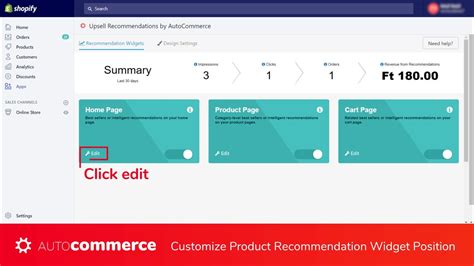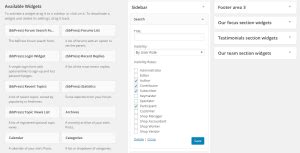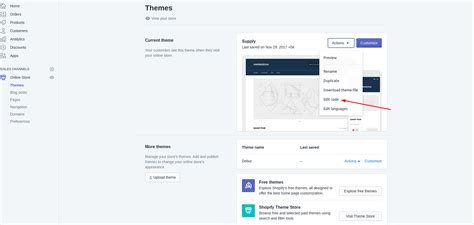What is a Recommendation Widget?
A recommendation widget is an interactive element on a website that suggests relevant content, products, or services to users based on their browsing behavior, preferences, and past interactions. These widgets aim to enhance user engagement, increase conversions, and provide a personalized experience for visitors.
Recommendation widgets can take various forms, such as:
| Widget Type | Description |
|---|---|
| Related Content | Suggests articles, blog posts, or videos similar to the one currently being viewed. |
| Product Recommendations | Displays products that complement or relate to the item a user is browsing or has purchased. |
| Personalized Suggestions | Offers tailored recommendations based on the user’s browsing history, preferences, or behavior. |
The effectiveness of recommendation widgets lies in their ability to analyze user data and deliver relevant suggestions in real-time. By leveraging machine learning algorithms and behavioral analytics, these widgets can adapt to individual user preferences and provide a dynamic, engaging experience.
Benefits of Recommendation Widgets
Implementing a recommendation widget on your website can offer several benefits:
-
Increased User Engagement: By suggesting relevant content, recommendation widgets encourage users to explore more of your website, leading to longer session durations and reduced bounce rates.
-
Enhanced User Experience: Personalized recommendations demonstrate that you understand your users’ interests and preferences, creating a more enjoyable and tailored browsing experience.
-
Boosted Conversions: Recommendation widgets can showcase products or services that align with users’ needs, increasing the likelihood of a purchase or conversion.
-
Cross-Selling and Upselling Opportunities: By suggesting complementary or higher-value products, recommendation widgets can drive additional revenue through cross-selling and upselling techniques.
-
Improved Content Discovery: Recommendation widgets help users discover content they might not have found otherwise, exposing them to a broader range of your offerings.
Types of Recommendation Algorithms
To power recommendation widgets, various algorithms are employed to analyze user data and generate relevant suggestions. Some common recommendation algorithms include:
-
Collaborative Filtering: This approach recommends items based on the preferences of similar users. It identifies patterns in user behavior to suggest items that like-minded individuals have enjoyed.
-
Content-Based Filtering: This method recommends items similar to those a user has previously interacted with. It analyzes the characteristics and attributes of items to find matches.
-
Hybrid Approaches: Combining collaborative and content-based filtering can yield more accurate and diverse recommendations by leveraging the strengths of both techniques.

Implementing a Recommendation Widget
To implement a recommendation widget on your website, consider the following steps:
-
Define Your Goals: Determine the purpose of your recommendation widget. Is it to increase user engagement, boost conversions, or showcase specific products or content?
-
Gather User Data: Collect relevant user data, such as browsing behavior, preferences, and past interactions. Ensure that you comply with data privacy regulations and obtain necessary user consent.
-
Choose a Recommendation Algorithm: Select an appropriate recommendation algorithm based on your goals and available data. Consider factors like scalability, accuracy, and computational resources.
-
Design the Widget: Create an intuitive and visually appealing design for your recommendation widget. Ensure that it seamlessly integrates with your website’s overall aesthetics and user experience.
-
Test and Optimize: Continuously monitor the performance of your recommendation widget. Conduct A/B testing to optimize its placement, design, and algorithm for maximum effectiveness.

Best Practices for Recommendation Widgets
To ensure the success of your recommendation widget, consider the following best practices:
-
Relevance: Prioritize the relevance of recommendations over quantity. Quality suggestions that align with users’ interests are more likely to drive engagement and conversions.
-
Transparency: Be transparent about how recommendations are generated. Provide users with the option to adjust their preferences or opt-out of personalized recommendations if desired.
-
Diversity: Strike a balance between showing highly relevant recommendations and introducing some diversity. This can help prevent a narrow focus and expose users to new and interesting content.
-
Timely Updates: Regularly update your recommendation algorithms to reflect changes in user behavior and preferences. Stale or irrelevant recommendations can negatively impact the user experience.
-
Performance Optimization: Ensure that your recommendation widget loads quickly and does not adversely affect website performance. Optimize algorithms and data processing to minimize latency.

Frequently Asked Questions (FAQ)
-
How do recommendation widgets collect user data?
Recommendation widgets collect user data through various methods, such as tracking browsing behavior, analyzing user interactions (clicks, purchases, ratings), and gathering explicit feedback through surveys or preferences settings. The collected data is used to generate personalized recommendations. -
Are recommendation widgets effective for all types of websites?
Recommendation widgets can be effective for a wide range of websites, including e-commerce platforms, content-based sites (blogs, news portals), and service-oriented websites. However, the effectiveness may vary depending on factors such as the nature of the business, target audience, and available user data. -
Can recommendation widgets be customized to match a website’s branding?
Yes, recommendation widgets can be customized to align with a website’s branding and design guidelines. Most recommendation widget providers offer customization options, allowing you to adjust colors, fonts, and layout to seamlessly integrate with your website’s visual identity. -
How often should I update my recommendation algorithms?
The frequency of updating recommendation algorithms depends on factors such as the dynamics of your user base, the rate at which new content or products are added, and the observed performance of the widget. It’s generally recommended to review and update algorithms periodically (e.g., monthly or quarterly) to ensure they remain relevant and effective. -
Are there any privacy concerns with using recommendation widgets?
Recommendation widgets rely on user data to generate personalized suggestions, which may raise privacy concerns. It’s crucial to be transparent about data collection practices, obtain necessary user consent, and adhere to data privacy regulations such as GDPR or CCPA. Implementing clear privacy policies and providing users with control over their data can help mitigate privacy concerns.
Conclusion
Recommendation widgets are powerful tools for enhancing user engagement, personalization, and conversions on websites. By leveraging user data and advanced algorithms, these widgets deliver relevant suggestions that cater to individual preferences and interests.
Implementing a recommendation widget requires careful planning, data collection, algorithm selection, and continuous optimization. By following best practices and prioritizing user privacy, businesses can harness the potential of recommendation widgets to provide a superior user experience and drive business growth.
As technology evolves and user expectations rise, the importance of personalization and relevance in online experiences will only continue to grow. Embracing recommendation widgets and adapting them to your specific needs can give you a competitive edge in today’s digital landscape.

No responses yet